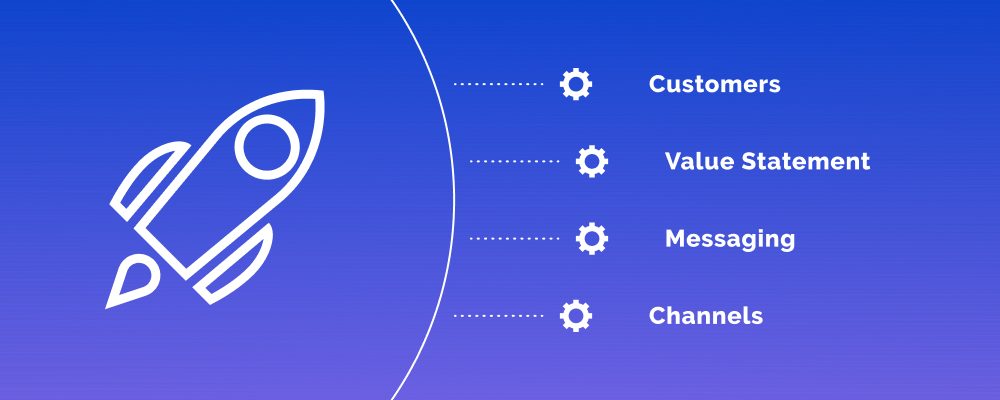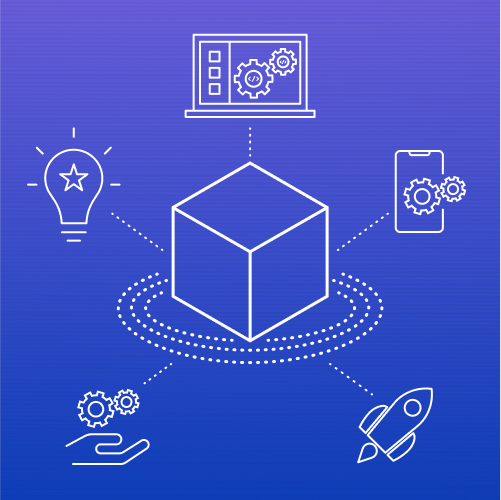Software Product Development, zBlog
Seven Stages In The New Product Development Process
trantorindia | Updated: July 13, 2022
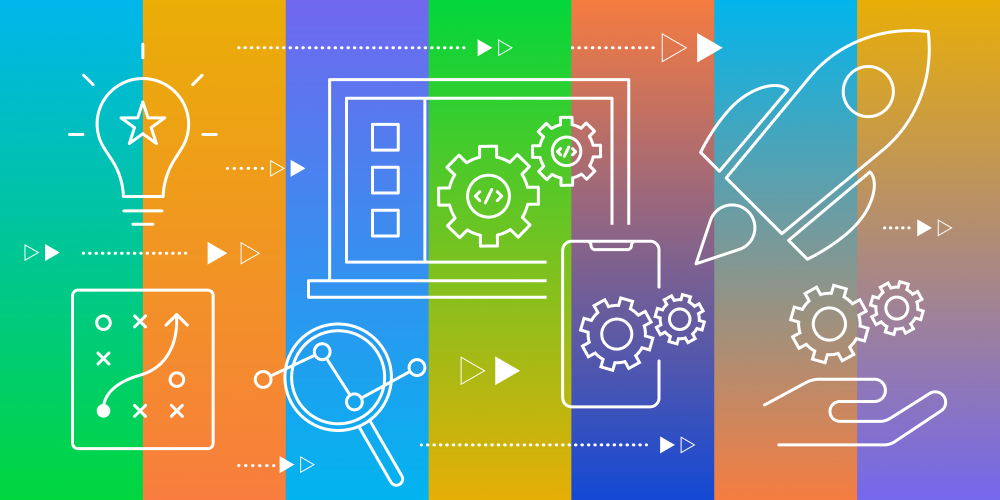
A new product’s development can be complex. You are confident that your concept can enrich a target market, but you are unsure of exactly how to reach that market with your product. If you’ve never done it before, this procedure could be particularly challenging because you might not even know where to start. Fortunately, the new product development process has a blueprint, which is a method that will enable you to make your ideas a reality.
What is New Product Development?
Before we begin the process, let’s discuss what new product development comprises to ensure everyone is on the same page.
Turning a concept into a functional product is known as new product development. It entails assessing the market, end users’ preferences, the viability of ideas, and the market.
On the other hand, the process of improving an existing product or adding new features to it is referred to as product development. In contrast, the process of bringing life to a novel notion is referred to as new product development. It entails starting from scratch to generate a brand-new asset.
Successful new product development contains tools like Trello for task management and tracking, Zoom for video collaboration, Dropbox for cloud storage, Figma for designers working remotely, Airtable for relational data management, and others.
What Elements Could Prevent The Product From Being a Commercial Success?

- Low quality : the code was written poorly, the functionality was badly executed, or the user interface was confusing.
- Weak financial plan: The product or services pricing isn’t competitive; it’s either too high, deterring the customer from buying, or too inexpensive, making the business unprofitable.
- Improperly identified market: If the niche is too small, there won’t be enough interested users to pay for development costs. The product won’t stand out and is likely to go overlooked by the target market if the field is, on the other hand, too extensive.
- Unfit Product: The product does not address the fundamental requirements of target customers or comparable products that currently exist and generate the most demand.
- Untimely release: Because the corporation waited too long to deliver the product, there are now too many viable and competitive alternatives. Another possibility is that the company hurried the submission and released incomplete work.
- Not Much Promotion: The product wouldn’t reach the target customers if the business devoted all of its resources to its design and development without first setting aside money for marketing.
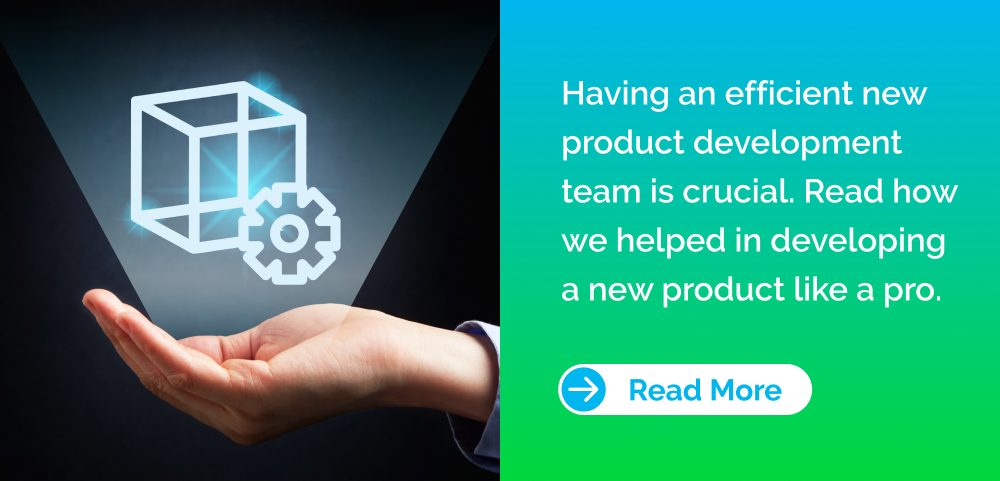
Seven Stages of New Product Development Process
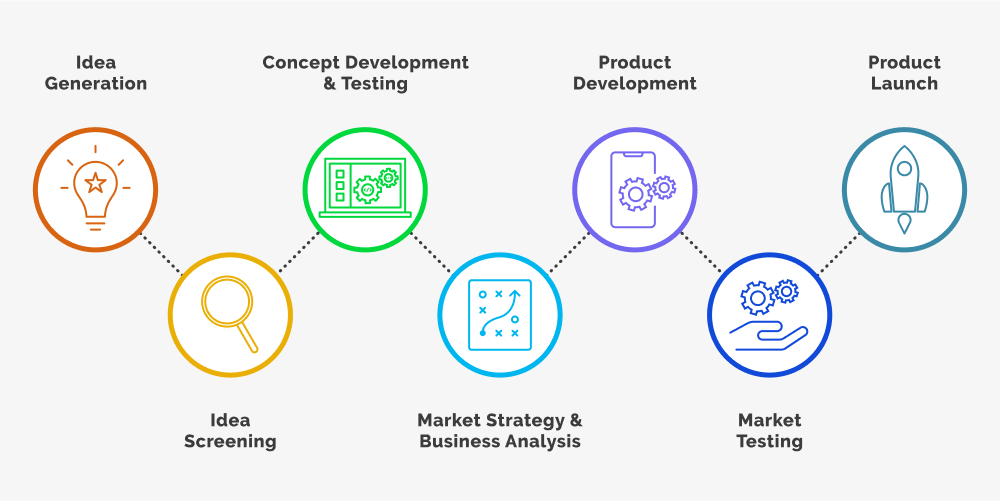
What is NPD and its Process?
New Product Development (NPD) refers to the complete process of bringing a new product to market. The new product development process includes several crucial stages that ensure the product meets customer needs and business objectives. This systematic approach allows organizations to innovate effectively, minimizing risks and maximizing success.
The product determines the process for developing a new product. It must be adaptable enough to change to meet the needs of various industries and businesses.
The consumer can be seen as the essential factor impacting the decision or process at every stage. The target market must be the primary focus for a product launch to succeed and last. It’s essential to comprehend the end-user’s needs and who your competitors are.
So let’s review the essential procedures for creating a new product. Consequently, you will feel comfortable with the process and be aware of any essential adjustments.
Stage 1: Idea Generation
Idea creation is generating suggestions for brand-new products or methods to enhance current ones. To pinpoint a problem and provide creative solutions, businesses evaluate market trends, research, and delve deeply into user requirements and wants throughout the product discovery process.
YYou may assess your assets, vulnerabilities, opportunities, and Challenges using a SWOT analysis. It may be a highly efficient technique to pinpoint your product’s weak points and determine where the most significant potential is.
Amongst strategies you can deploy are:
- Carrying out a market analysis
- Collaborating with product marketing and sales teams to assess the effectiveness of the positioning of your product’s value
- Using data analytics, surveys, focus groups, and interviews to get customer feedback
- Performing user testing to determine how users interact with your product and find areas for improvement
- Eventually, the idea generation stage’s objective is to generate as many ideas as possible while concentrating on providing value to your clients.
Stage 2: Idea Screening
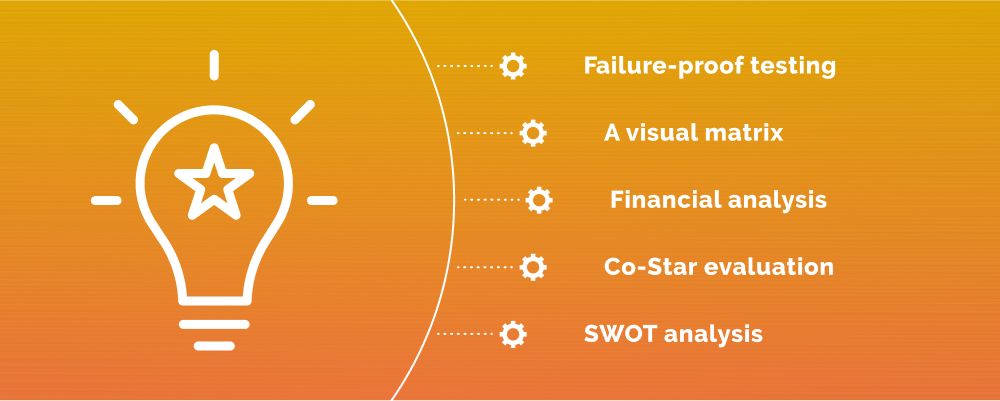
It’s time to test your ideas after you’ve come up with them to see if they can last throughout time. We can tell right away that at this point, it’s desirable to have at least 5–10 ideas. You desire the flexibility of choice since it will make your assessment more unbiased.
Idea screening excludes concepts that don’t fit with investor preferences, market trends, corporate ideals, or user demands—moving to the following stages before you are confident that your idea is workable. Well-thought-out is vital for the success of your product.
How to assess new products ideas:
- Failure-proof testing: The team develops standards intended to weed out unprofitable concepts. These elements often include feasibility, money, corporate values, customer demands, and competitiveness. These are fundamental demands that all new goods must meet.
- A visual matrix: To make the outcomes of your evaluation more quantifiable, give each criterion a number between 0 and 10. The concept with the highest score will have the edge over the others.
- Financial analysis: Even if you included the very minimum in your matrix of financial requirements, it’s always better to be safe than sorry. Perform an unbiased budget analysis with a single emphasis on the price and anticipated earnings of the solution.
- SWOT analysis: You must look at your product’s strengths, weaknesses, opportunities, and threats to ascertain how long it will last. A plan is never flawless, even if it appears like it may work (no product is). It’s essential to be familiar with obstacles from the start so that you won’t be taken by surprise.
- Co-Star evaluation : Co-Star evaluation is a less famous but valuable indicator for assessing your expectations and product knowledge. You must outline the capabilities of the product, the team’s strengths, and the solution’s functionality. Additionally, decide which team members and skills you require, develop competitive advantages, and specify the standards for success.
Stage 3: Concept Development & Testing
All ideas that make it through the screening stage are developed into concepts. A product concept is a thorough outline or description of your idea. It should include information about your product’s target market, the characteristics and advantages of your solution that would interest clients, and the suggested retail price. The anticipated cost of creating, producing, and releasing the product should also be included in the idea.
Creating diverse product concepts will enable you to assess the level of appeal of each to clients and choose the notion that would offer them the most value.
Test your concepts with a small group of potential customers once you’ve produced them. Before investing time and money in its development, concept testing is an excellent technique to get consumer feedback on product concepts.
Concepts are frequently employed to validate market claims. Share your idea with potential customers before committing to developing a new product to get feedback and see whether the market would be receptive to it.
Stage 4: Market Strategy & Business Analysis
You need to have a comprehensive marketing plan if you want to make sure that your product is successful. Making decisions on branding, advertising, and launch is a crucial part of developing a marketing plan. The fourth step of the new product development process comprises assessing and analyzing the budget, financial plan, and competitive landscape.
Every marketing plan should help the company realize its objective. It will have an impact on how business is conducted. However, it should highlight how the product fulfills the organization’s objective.
An efficient marketing plan should have
- Describe the new product and services that are available.
- Outline the product’s function in the market.
- Characteristics of the intended audience.
- Attributes of the competitor’s product.
- Determine the market’s response to the market plan.
Stage 5: Product Development
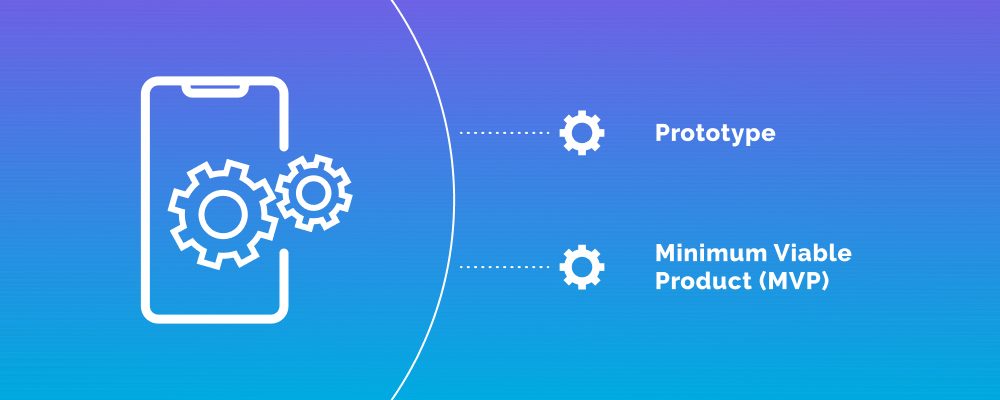
It is time to continue with the product life-cycle development process once the idea for new product development has been defined, the market strategy has been documented, and the business analysis has been done.
The development of the prototype comes first, then the MVP, in the new product development process.
- Prototype: This intends to develop the product’s UI/UX and distribute it to the stakeholders. This makes it easier to picture the product’s appearance and determine if it adheres to ergonomics best practices.
- Minimum Viable Product (MVP): The MVP is introduced into the market with the fewest features possible when design, development, and testing are complete. The initial answer determines the subsequent iterations.
Leveraging Agile Product Development, which emphasizes incremental and iterative development while encouraging collaboration and communication, is the ideal method to approach new product development.
This is superior to the waterfall method because it enables back-and-forth movement throughout the product development cycle as new customer needs to materialize. Agile and Waterfall software development approaches are different even if their development stages are comparable.
Stage 6: Market testing
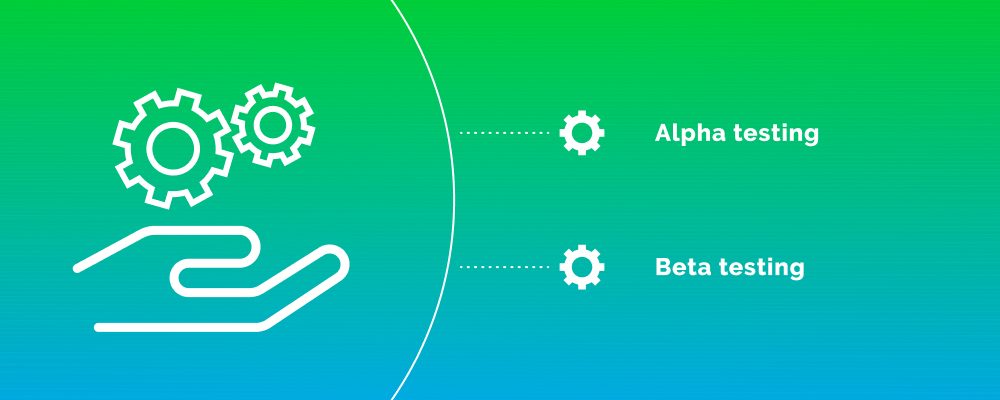
Deployment of the final product to a test market allows for evaluating its performance under the planned marketing strategy.
You can use one of two testing techniques:
- Alpha testing: This software testing is done to find issues before a product is made available to the general public.
- Beta testing: Actual users have the chance to try the product during beta testing and provide comments on it.
The test marketing phase’s objective is to confirm the new product’s overall concept and prepare for launch.
Stage 7: New Product Development Launch
You are now prepared to launch your new product onto the market. Ensure your product, marketing, sales, and customer support teams are in place to ensure a successful launch and track its performance.
Here are some important factors to take into account to better comprehend how to design a go-to-market strategy.
- Customers: Recognize who will make the ultimate purchasing choices and why they will buy your product. Create buyer personas and include their responsibilities, goals, and pain areas.
- Value Statement: Outline how you differ from the competition and why customers should choose to purchase your goods.
- Messaging: Determine your messaging strategy for conveying the value of your product to prospective clients.
- Channels: Select the appropriate marketing platforms, such as email marketing, social media, SEO, and others, to advertise your products.
What are the 4 Types of New Product Development?
The new product development strategy can follow different pathways based on market needs and organizational goals. The four primary types include:
- New-to-the-World Products Innovations that create entirely new markets (e.g., smartphones or electric vehicles)
- New Product Lines Expanding existing product categories (e.g., Apple introducing AirPods)
- Product Improvements Enhancing existing products with improved features, quality, or design
- Repositioned Products Rebranding or repurposing products to target new markets or demographics
Phases of Product Development
The phases of product development align closely with the stages mentioned earlier but focus heavily on refining and perfecting the product at each step. These include:
- Discovery Phase: Identifying customer pain points and gaps in the market
- Design Phase: Creating prototypes and wireframes
- Development Phase: Building and coding the product
- Testing Phase: Identifying bugs, vulnerabilities, and UX issues
- Launch Phase: Deploying the product and gathering post-launch feedback
AI Adoption in Product Development: A Booming Trend
AI is rapidly transforming the world of product development, offering an array of benefits and exciting possibilities. Here’s a breakdown of the current state:
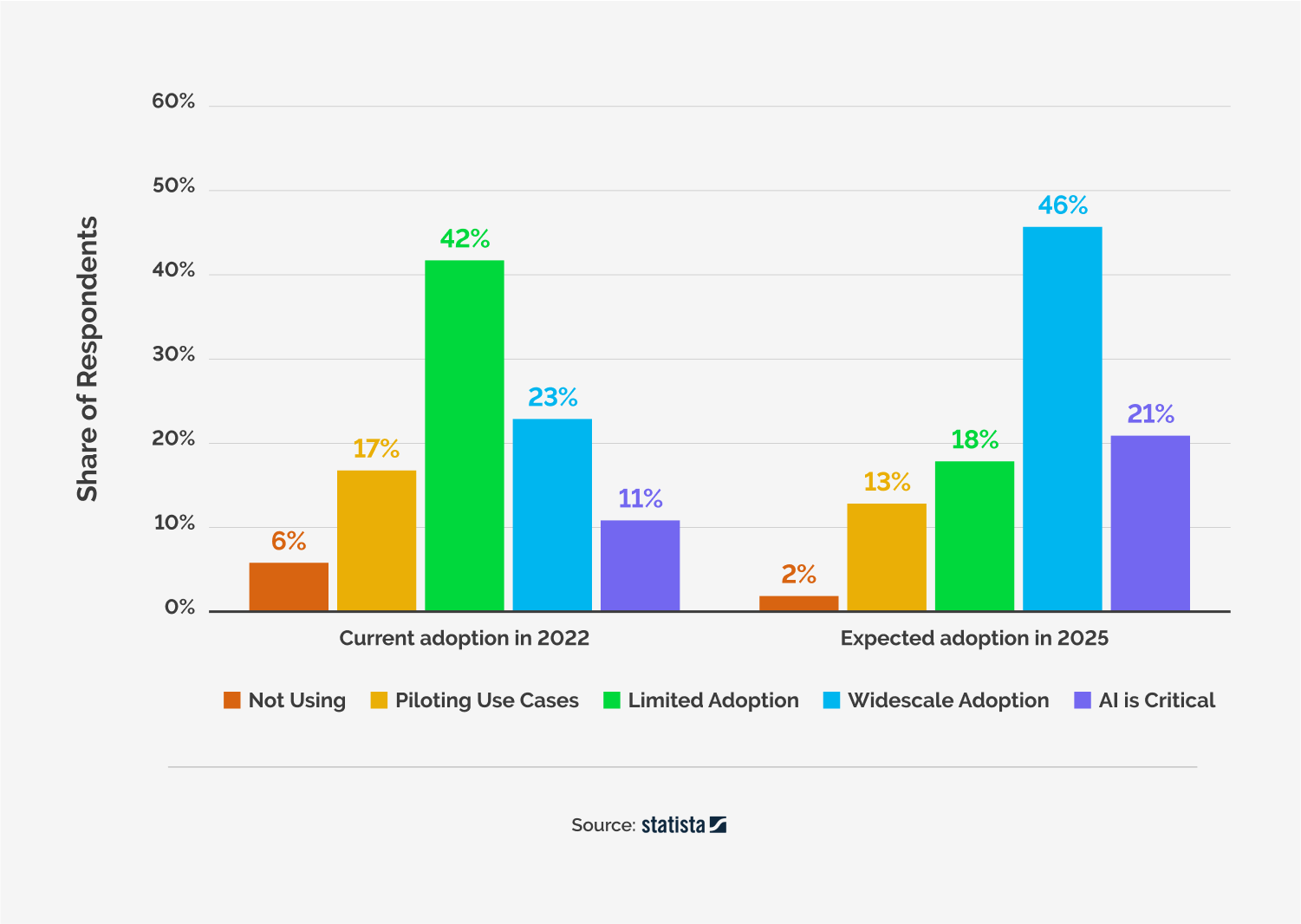
- Benefits of AI adoption:
Faster and more efficient development: AI automates repetitive tasks, analyzes vast data sets, and predicts future trends, allowing quicker decision-making and streamlined processes. Enhanced creativity and innovation: AI can brainstorm novel ideas, explore hidden design spaces, and suggest unexpected solutions, boosting innovation potential.
Personalized and adaptive products: AI helps cater to individual customer needs and preferences by tailoring products and features based on usage patterns and real-time data. Optimized for performance and user experience: AI can analyze user behavior and feedback to refine products for optimal performance, usability, and satisfaction. - Current adoption rate:
While limited currently, AI adoption in product development is expected to surge by 2025, according to Statista. Companies recognize its potential and are actively investing in AI integration. Industries like manufacturing, healthcare, and technology are already leading the charge, utilizing AI for supply chain optimization, drug discovery, and personalized recommendations. - Challenges to overcome:
- Technical expertise: Building and implementing AI solutions requires specialized skills and resources, creating a hurdle for some companies.
- Data availability and quality:AI relies heavily on data, and its effectiveness hinges on access to large, clean, and relevant datasets.
- Ethical considerations: Bias in AI algorithms and transparency in decision-making are crucial concerns that need careful addressing.
AI adoption in product development represents a significant shift with immense potential. As companies overcome challenges and harness their power effectively, we can expect even more innovative, personalized, and efficient products in the future.
Key Trends and Statistics in New Product Development
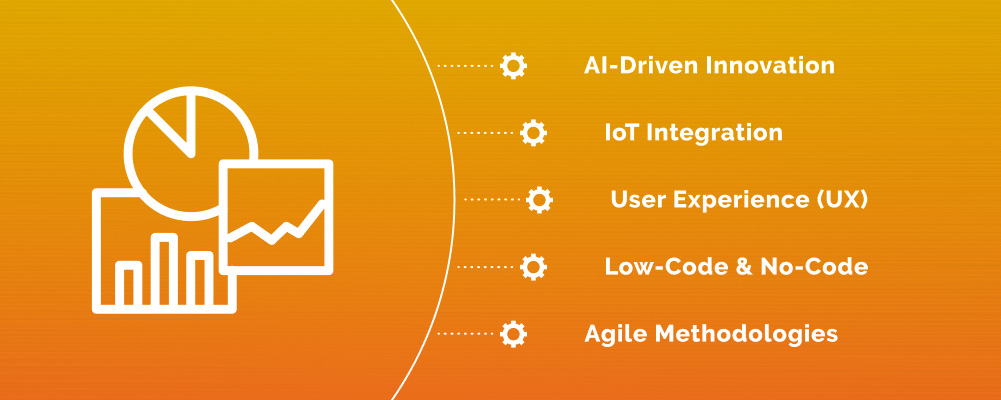
AI-Driven Innovation
- Companies using AI in product development see a 15-30% increase in efficiency and a 10-20% reduction in time-to-market.
- AI tools like generative design are becoming more popular, optimizing solutions that human engineers might not consider.
Sustainability
- The global market for sustainable products is projected to reach $150 billion by 2025, with a CAGR of 8.5%.
- 72% of consumers prefer products from companies with sustainable practices.
Collaboration and Remote Work
- By 2025, 75% of product development teams are expected to operate in hybrid or fully remote environments.
- Tools like Slack, Jira, and Figma facilitate seamless communication and project management.
IoT Integration
- The IoT market is expected to reach $1.6 trillion by 2025, driven by smart home devices and industrial applications.
User Experience (UX)
- Companies focusing on UX design see a 37% increase in customer satisfaction and a 20% boost in revenue.
Low-Code and No-Code Development
- The low-code market is projected to grow to $45.5 billion by 2025, with a CAGR of 28%.
Advanced Manufacturing Techniques
- Technologies like 3D printing and digital twins reduce development times by 20-50% and decrease the number of prototypes needed.
Product Success Rates
- For every 7 product ideas, only 1.5 launch, and only 1 succeeds.
- New products have a failure rate of 25-45%.
Research and Development Spending
- In the U.S., 42.1% of companies allocate a significant portion of their revenue to R&D, compared to 17.8% in China and 17.5% in Europe.
Agile Methodologies
- More product development teams are adopting agile methodologies for faster and more flexible development processes.
Enhancing Your New Product Development Procedure

To optimize your new product development procedure, consider the following strategies:
- Embrace AI and Automation: Incorporate predictive analytics, generative design, and AI-driven insights to streamline development.
- Adopt Agile Methodologies: Break your development cycle into sprints for better flexibility and faster iterations.
- Prioritize Sustainability: Integrate eco-friendly practices and materials into product design.
- Focus on Customer Experience: Leverage user feedback loops to refine products throughout the product development stages.
- Invest in Collaborative Tools: Platforms like Miro, Asana, and Trello can improve communication among dispersed teams.
From Brainstorming To Reality
When the new product development process is over, you will have brought to fruition the brainstorming ideas and produced a valuable good or service that meets a demand from the market. If you are successful, you will have developed a good plan that you can use to continue innovating and developing new goods, providing your customers with the enjoyable experiences they crave.

